– 4 September, 2010
The current crisis defined is of a general awakening from the solipsism of the modern and even post-modern era: 9/11, the rapidly destabilising global ecology and the immanent collapse of late capitalist logic are smelling salts bringing forward a new era of conscious consciousness. When spilling over to the production of art, this ultra-consciousness seems to take on a sober aesthetic dialectic of the subjective gaze, hence the overwhelming presence of documentary video and photography found at the biennial. For the most part the present still looks suspiciously like the 90s.
Berlin
What is Waiting Out There
Curated by Kathrin Rhomberg
11 June - 8 August 2010
The title is a bit of a sinker, but when I heard that this year’s Berlin Biennale What Is Waiting Out There was to focus on the return of the real (or realism), as a response to ‘the social and political developments in the area and this present time of crisis’, I was intrigued. To speak of realisms - even with the nuance emphasised by the plural - remains treacherous given its ambiguities and defining a crisis seems equally insolvent. Drawing up an exclusive relationship between the two seems on one hand a logical but on the other a daring move, as at any given time - and as historical precedent has shown - artistic responses to the weight of the world in crisis, bifurcate equally between escapism and realism.
Understanding these complexities, curator Kathrin Rhomberg has specified that her enquiry is entirely Berlin-specific, only including work that has been produced recently or specifically for the Biennial. In short, it looks at 45 artists who somehow engage the real-live-world, not confusing it with the gallery space but referring the viewer back to it: to the basic mechanics of everyday life - production, industry, vocational realities, financial systems. Her principle concern has been to look for relationships that exist between art and ‘the present moment’. This seems an impossibly vague focal point but it does gain form in respect to the position Rhomberg takes that current artists, or artists working over the last decade, have developed an increasing tendency towards “New Historicism” i: a view to the past and not to the present, a propensity towards retrospection and historical anatomisation.
In Berlin, a city with such momentous historical vicissitudes to process, this is understandable. But rather than digging into this ossuary, attention is drawn to major forces radically changing the physical and demographic composition of the city today: a burgeoning immigrant population and the ferocious monster of gentrification. Highlighting both of these influences, the bulk of the Biennial has shifted from the patrician gallery district of Mitte, to Kruezburg, the more economically disadvantaged, (sub)-culturally vibrant, immigrant quarter, an area where artists can afford to live and work. Vietnamese artist Dan-Vo, for example, opened his Kruezberg studio to the public as a venue and a weekend of performances was held at the Hebbel am Ufer Theatre, including the likes of Ceal Floyer, Franz West and Santiago Sierra.
These decisions mark a profound departure from the last Berlin Biennale When Objects Cast No Shadow and the obsession with modernism and object fever and that has held grip over Berlin’s art scene in recent years. Exhibitions such as Klaus Biesenbach’s Political/Minimal at KW in late 2008, helped to eventually curb the saturation of reflexive and materialist art by identifying a political torque within it, making headroom for both Realpolitiks and Dingpolitiks ii. Unlike the explicitly political 2009 Istanbul Biennial What Keeps Mankind Alive curated by the Zagreb-based collective What, How & For Whom (WHW), Rhomberg’s Biennial doesn’t ostensibly aim to develop a political agenda, but without doubt the works selected share in a mindfulness of geo/socio-political concerns and unsettling future directions. Some works share almost synonymous critiques and references to contemporaneous issues. Both Episode 3, 2008 by Renzo Martens and All That Is Solid Melts into Air, 2008, by Mark Boulos are films which present ethical issues relevant to their own artistic practices and those of western industries in exploiting the poverty and despair of plantation workers in the Democratic Republic of the Congo and the people of the Nigerian Delta (site of a major Shell oil well) respectively.
The current crisis defined is of a general awakening from the solipsism of the modern and even post-modern era: 9/11, the rapidly destabilising global ecology and the immanent collapse of late capitalist logic are smelling salts bringing forward a new era of conscious consciousness. When spilling over to the production of art, this ultra-consciousness seems to take on a sober aesthetic dialectic of the subjective gaze, hence the overwhelming presence of documentary video and photography found at the Biennale. For the most part the present still looks suspiciously like the 90s - if one goes by the grainy, point and shoot video found at Oranianstrasse, one of the Biennial’s principle venues. The generally lo-fi video art found in abundance here proves that political film art seems to carry an aesthetic that hasn’t yet been abandoned (note: Les Manifs (Protest Marches) by Bernard Bazile, 2009 and Minerva Cuevas’ Dissidence v 2.0, 2010, both document protest demonstrations). Whenever I pick up a Vice Magazine (only because it’s free and for the Dos and Don’ts) the photography reminds me of how this Wolgang Tillmans-esque social realism has now become a cultivated gaze. The example of Tillmans demonstrates that via stylistic appropriation by subsequent artists and popular culture, realism and its inherent social critique can easily fall prey to fetishism, nostalgia, even romanticism.
That is perhaps why the more interpretative or less prescriptive works become more interesting in the context of the Biennale, such as a monumental installation at KW by the 24 Year old artist Petrit Halilaj. ‘The places I’m looking for, my dear, are utopian places, they are boring and I don’t know how to make them real’ occupies the entire ground floor area, where a life-size re-construction of the artist’s house in Kosovo was built throughout the duration of the exhibition and chickens ran freely be-fouling the gallery. Also surprising is the exhibition curated by art historian Michael Fried of drawings and gouaches by 19th century Berlin artist Adolph Menzel and the issue of e-flux journal guest edited by Marion von Osten. While the biennial was anything but visually spectacular, this was precisely the point. Rather than pandering to the audience’s entertainment need, this exhibition was not about delivering experiences but delivering messsages.
i 500 Words: Kathrin Rhomberg, Artforumonline.com, 06.08.10, http://artforum.com/words/id=25796
ii Dingpolitik is a German neologism most notably used by Bruno Latour in an essay for the exhibition project “Making Things Public: Atmospheres of Democracy” to describe the politics of making; Ding is the German word for both a thing and also for a political assembly.
Genevieve Allison
Recent Comments
John Hurrell
Readers who look at the line up of artists in this show might be interested to see Michael Stevenson's inclusion. ...
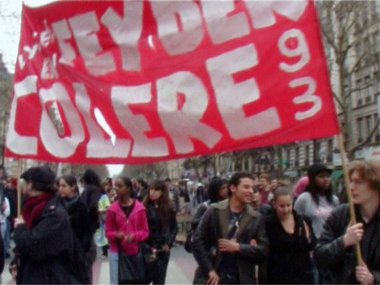

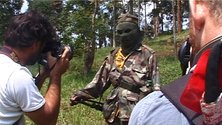

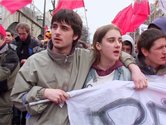
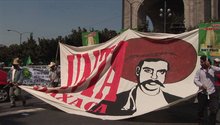
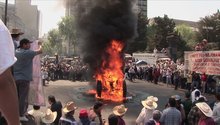
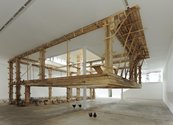

 Two Rooms presents a program of residencies and projects
Two Rooms presents a program of residencies and projects Advertising in this column
Advertising in this column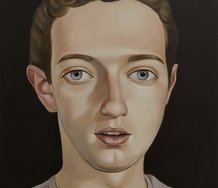
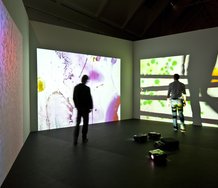
This Discussion has 1 comment.
Comment
John Hurrell, 9:19 a.m. 6 September, 2010 #
Readers who look at the line up of artists in this show might be interested to see Michael Stevenson's inclusion. He presented On How Things Behave, the video about the financial crisis exhibited in the New Gallery during the Triennial.
Participate
Register to Participate.
Sign in
Sign in to an existing account.